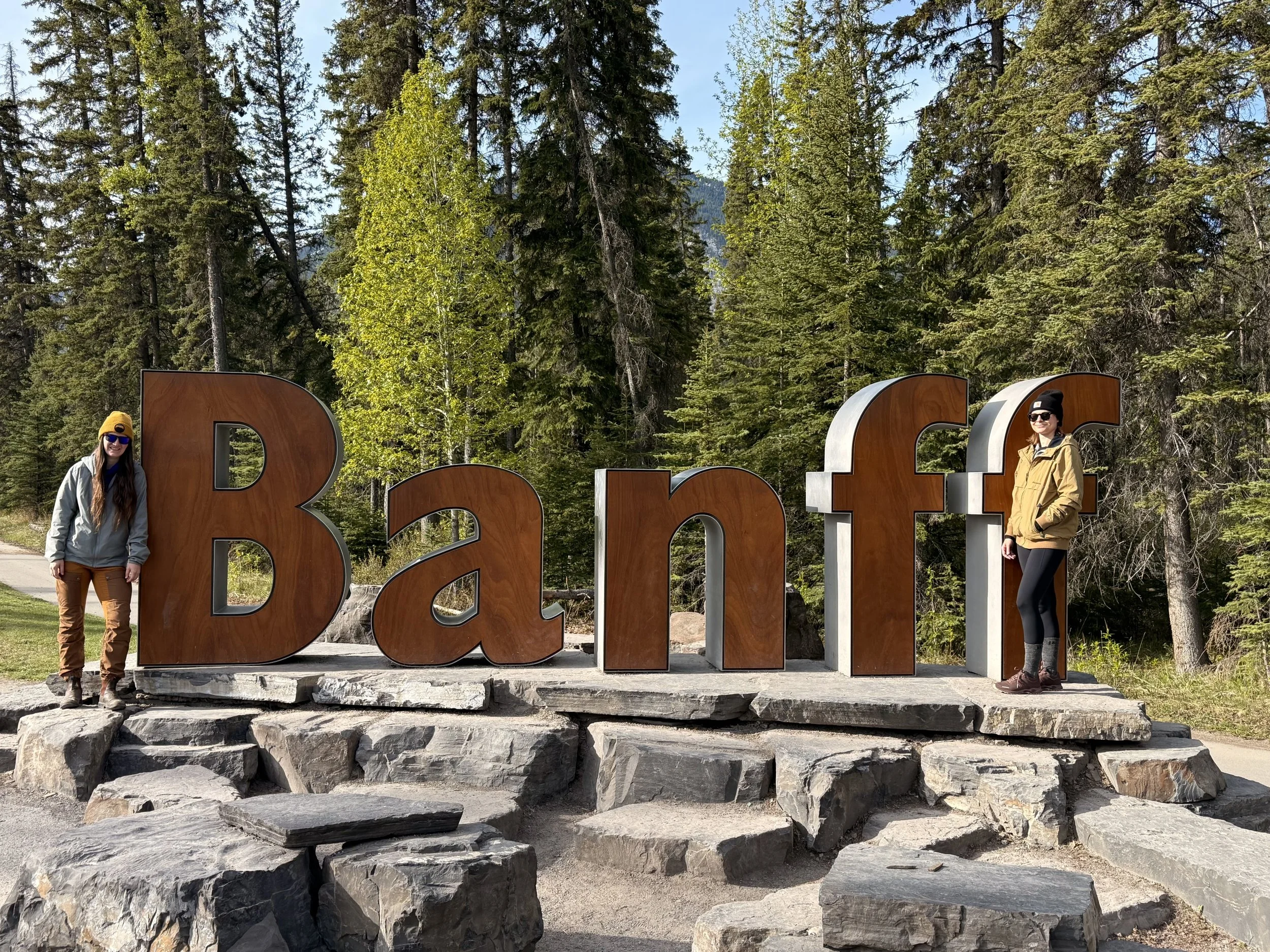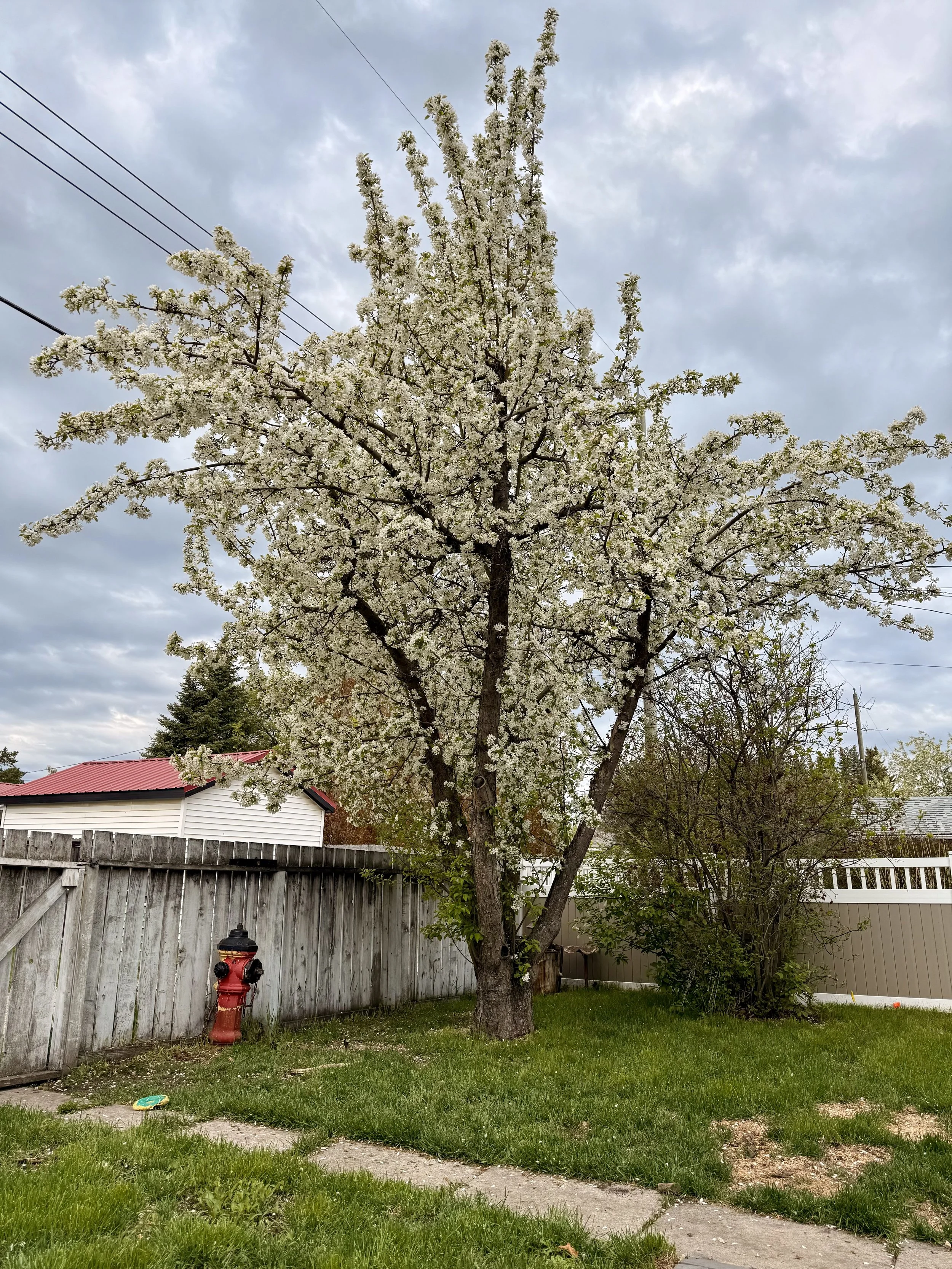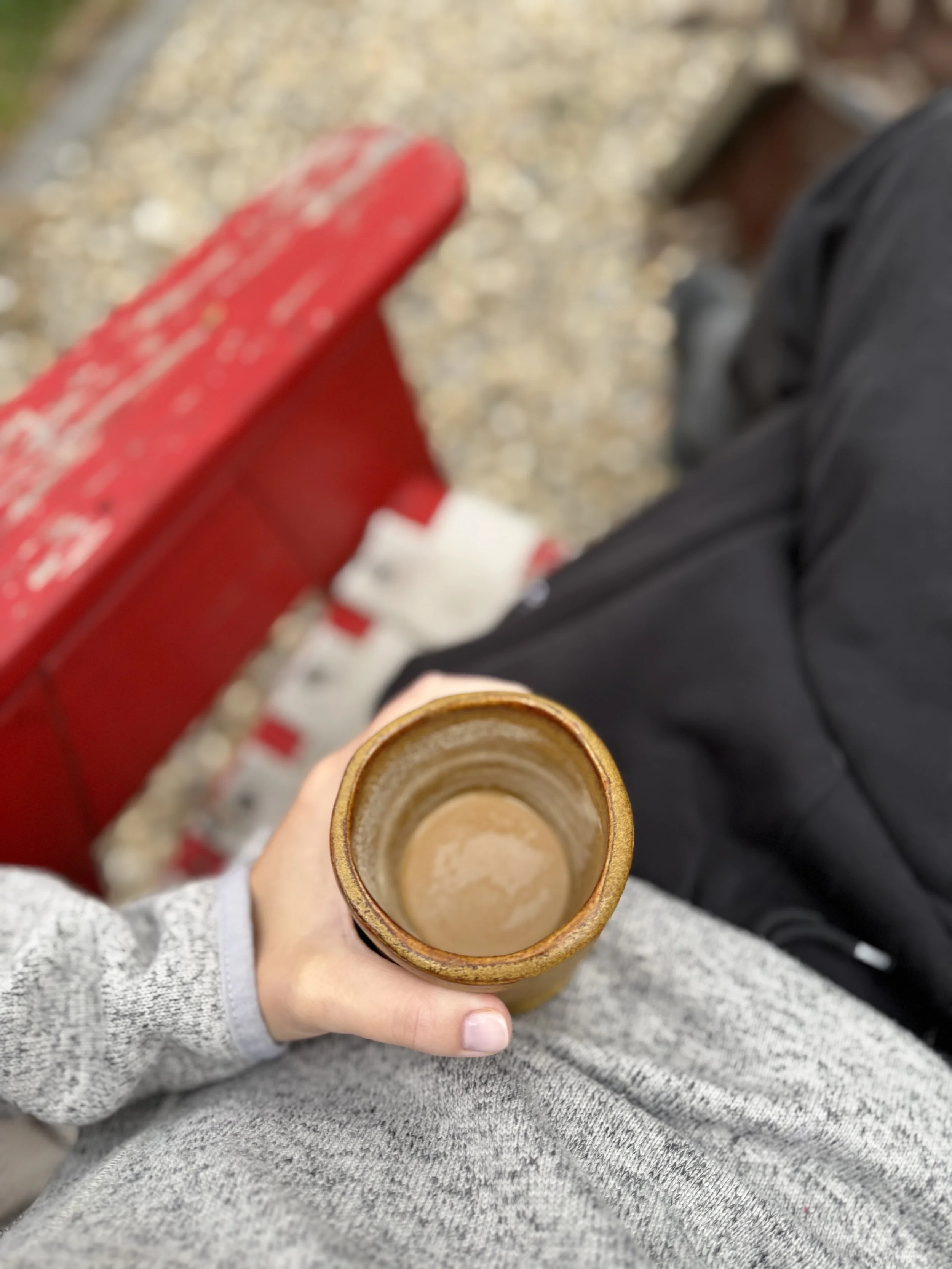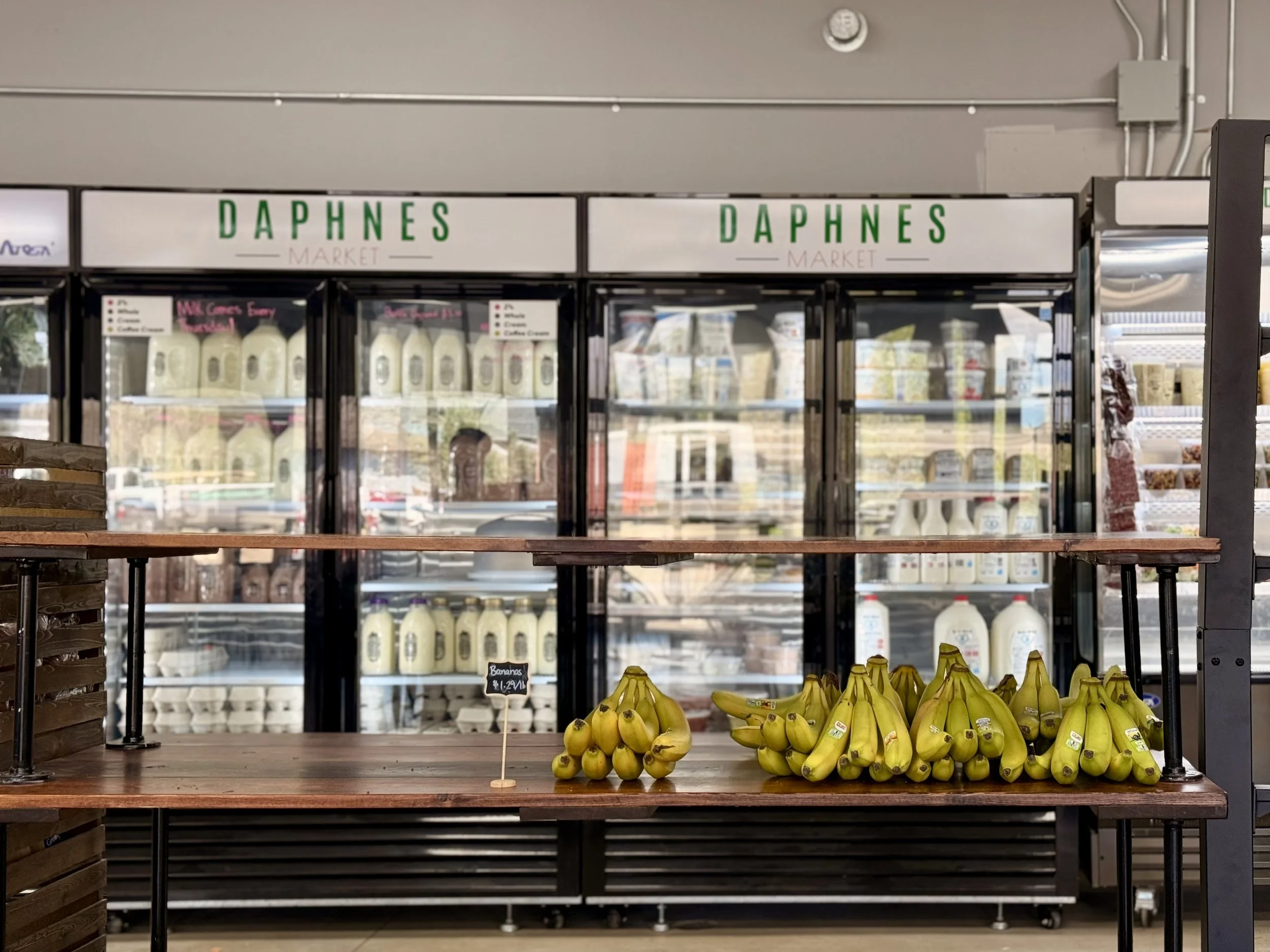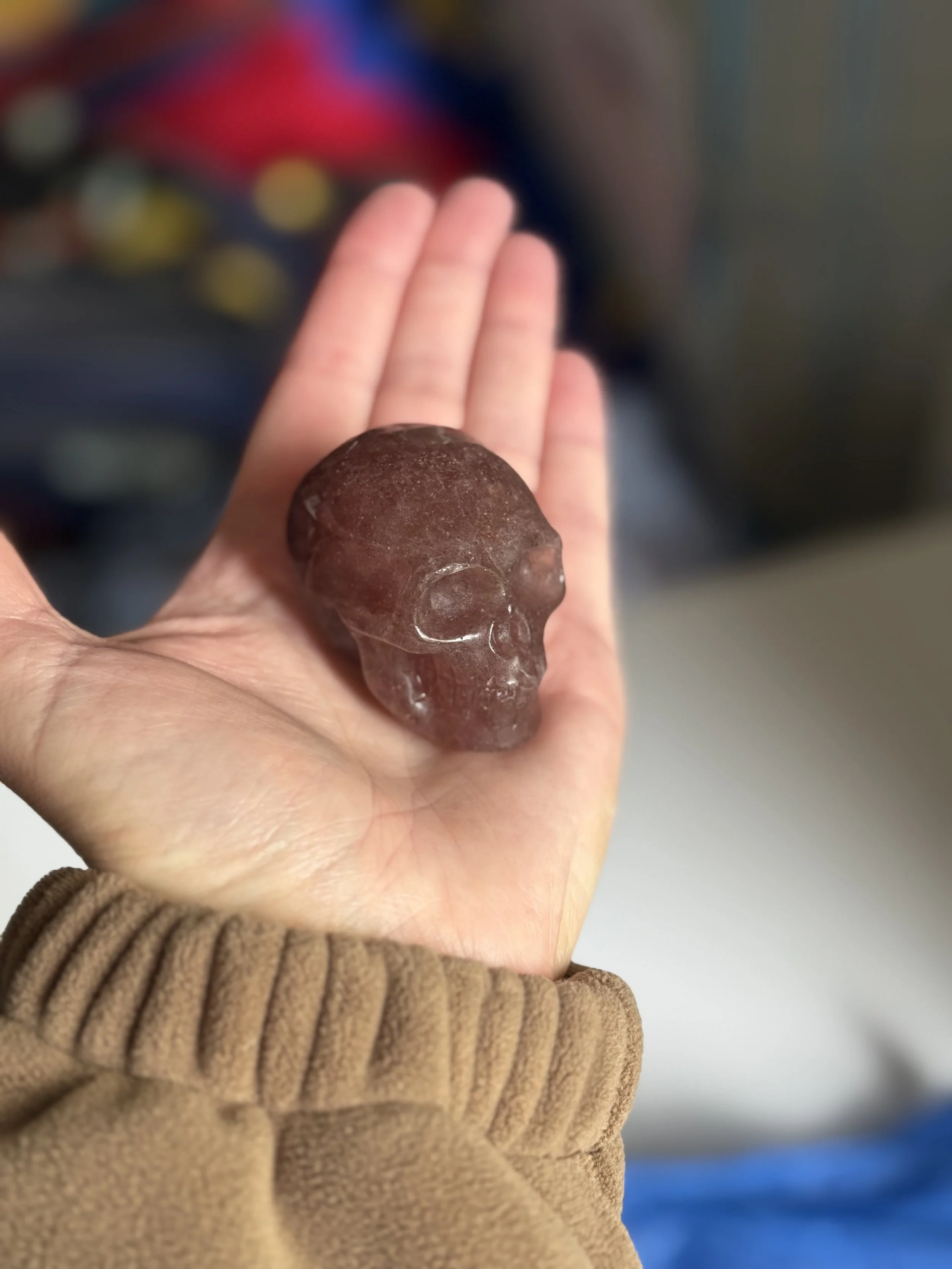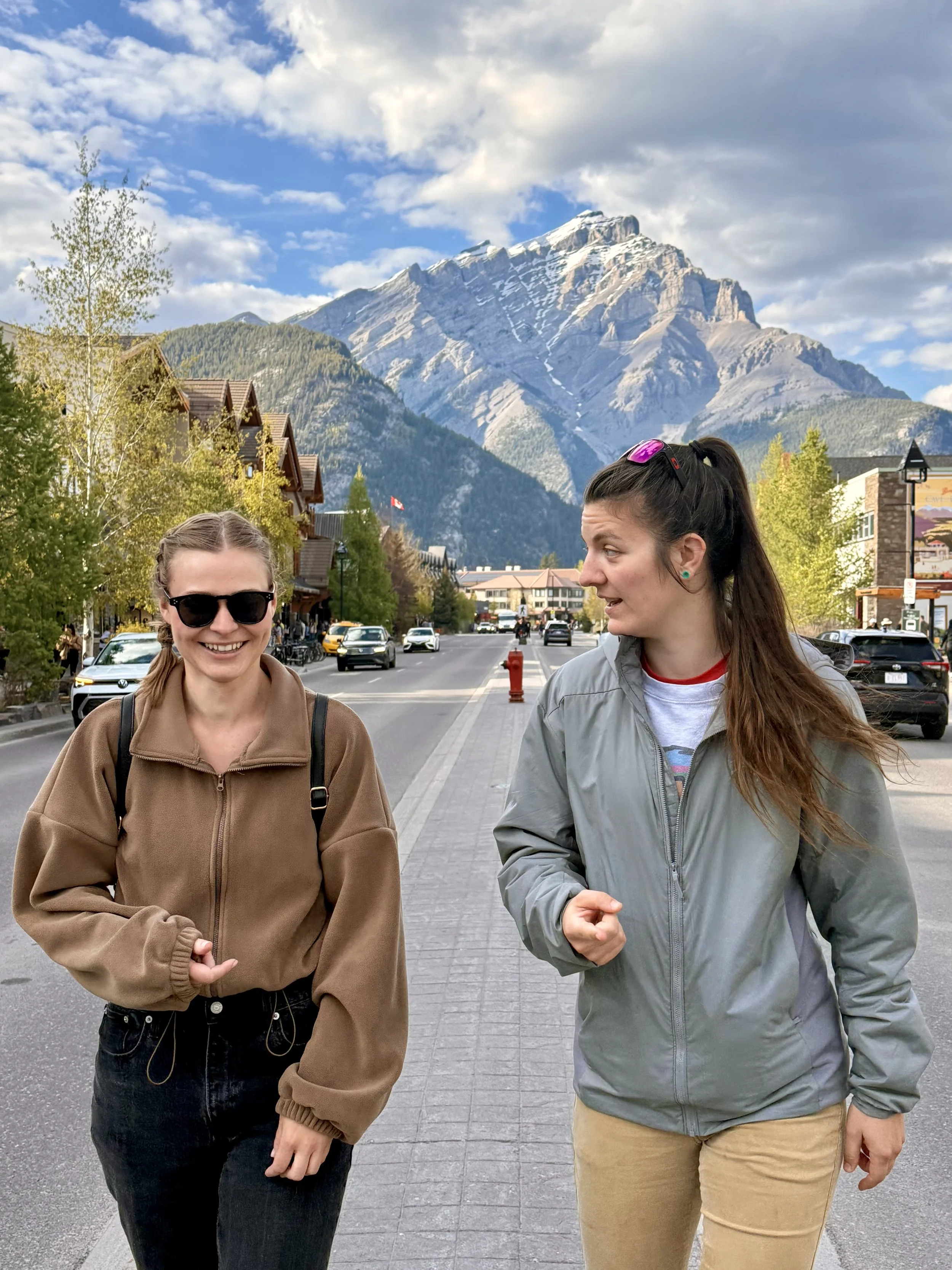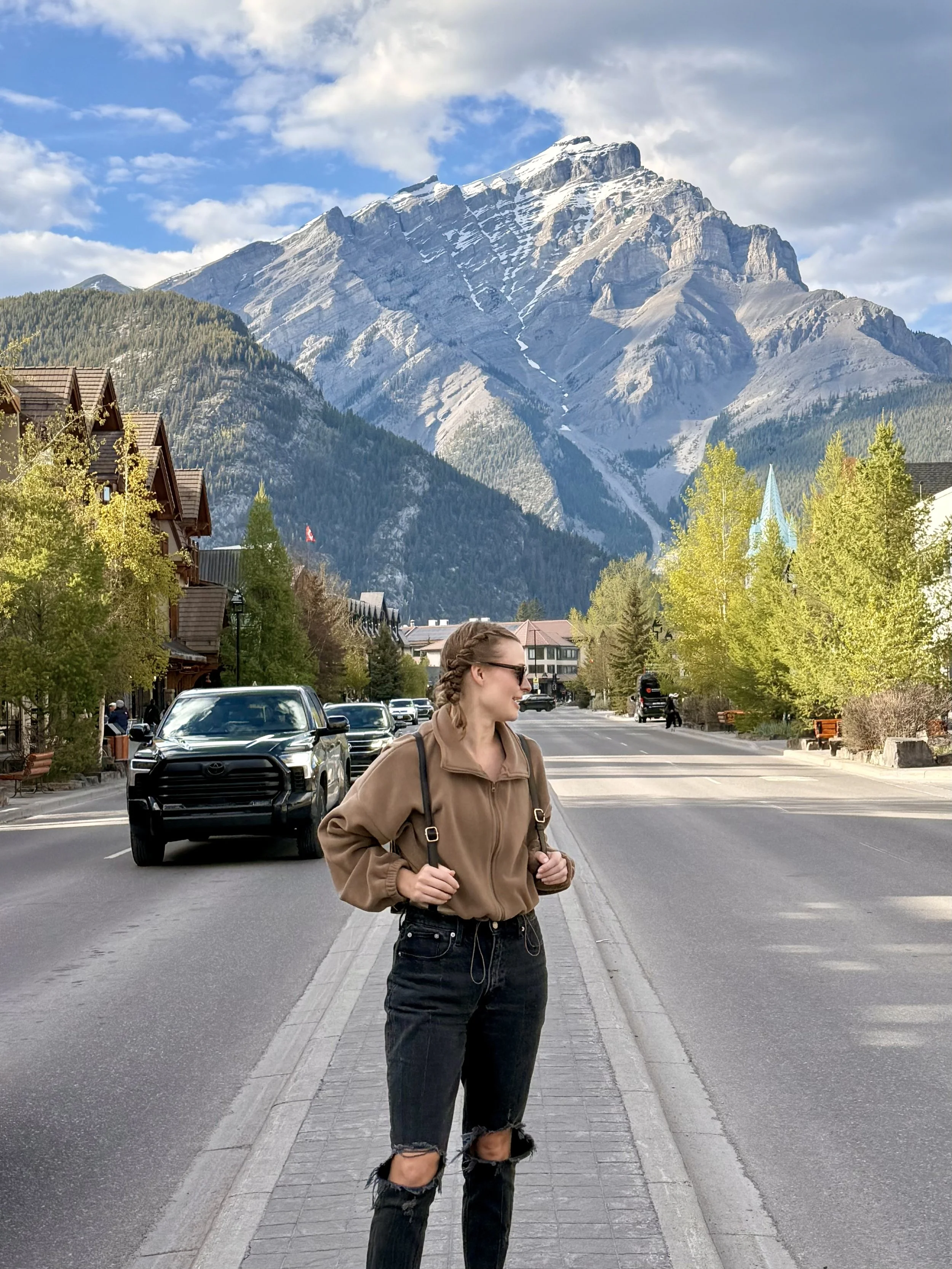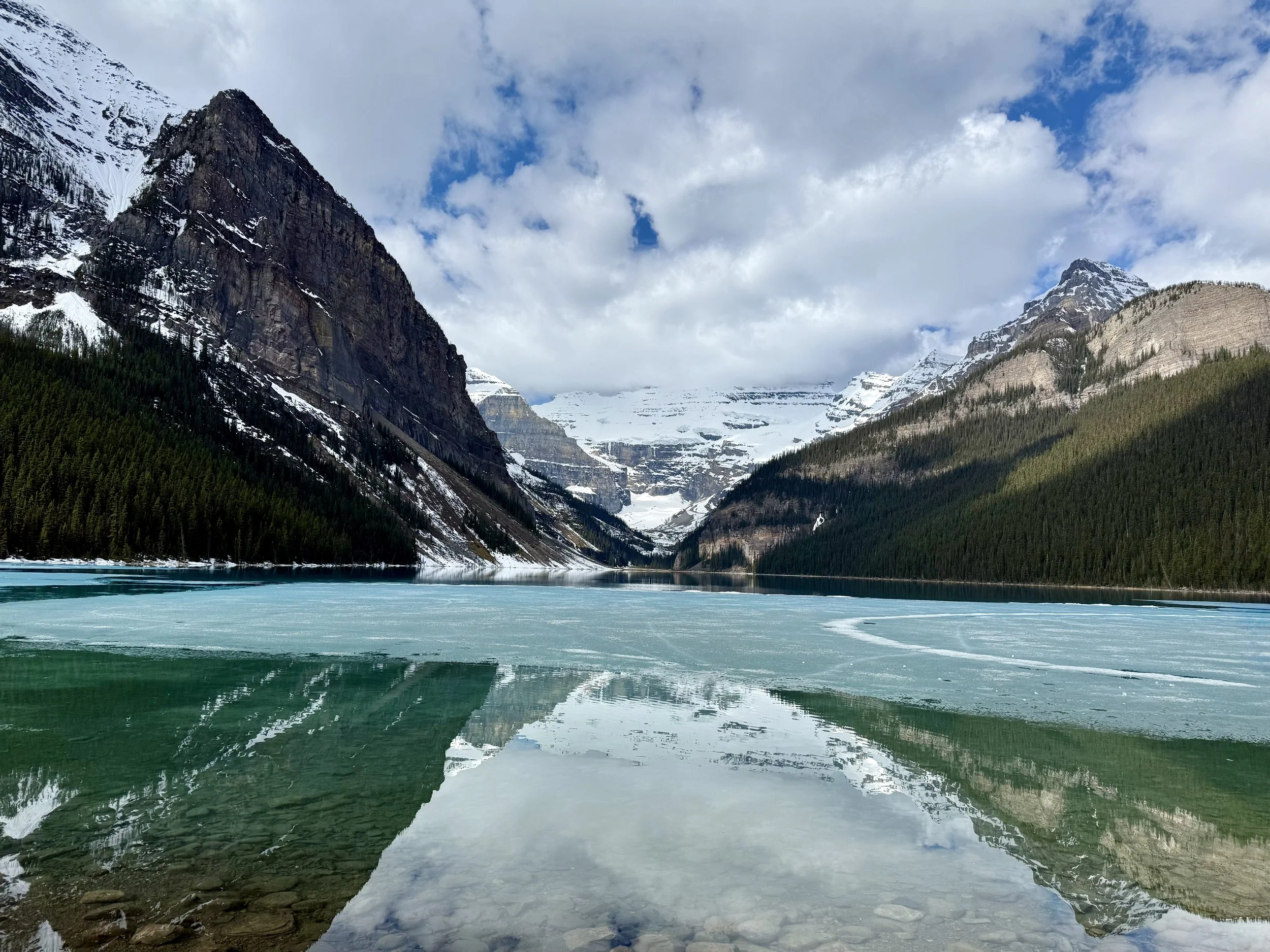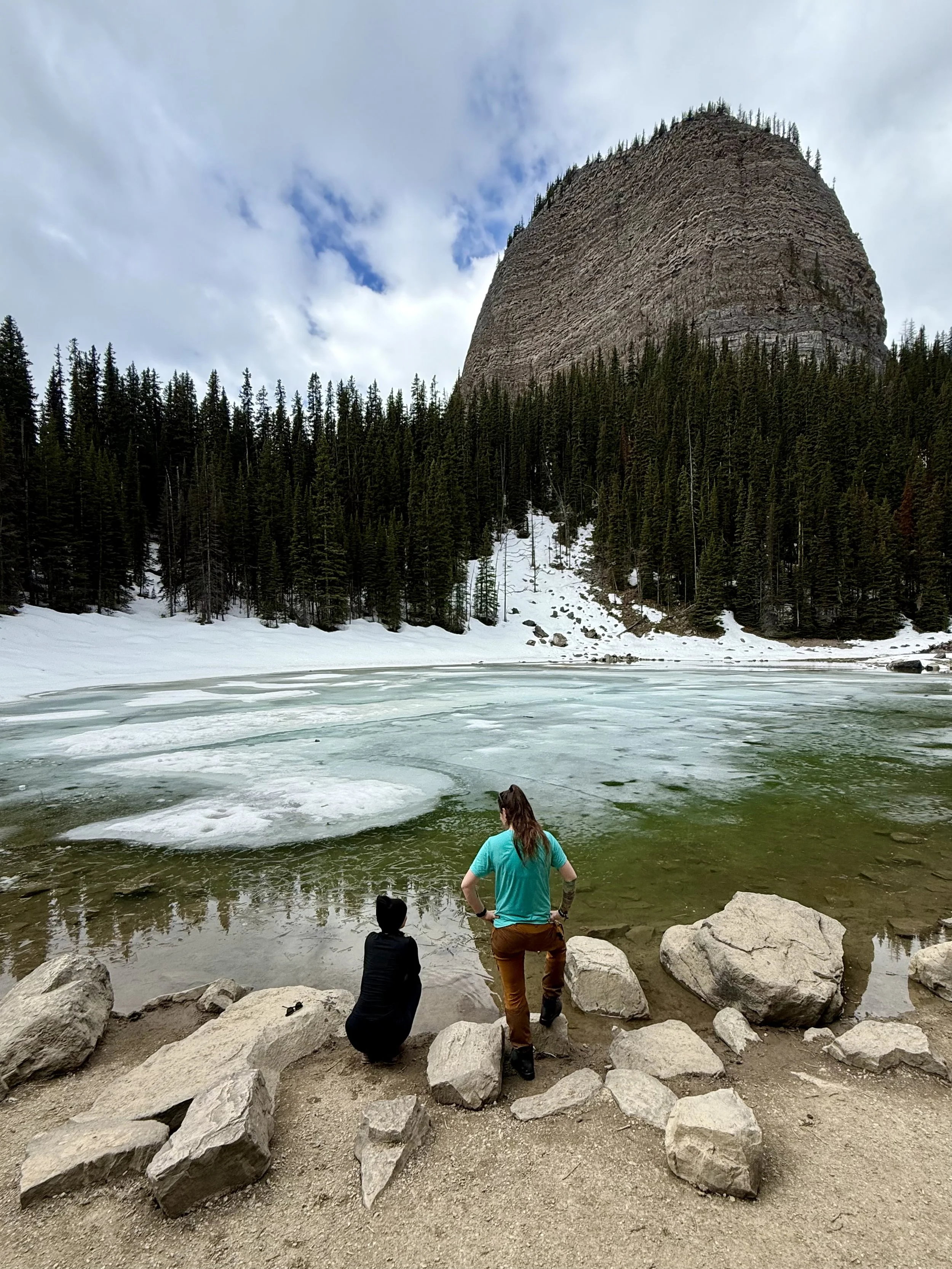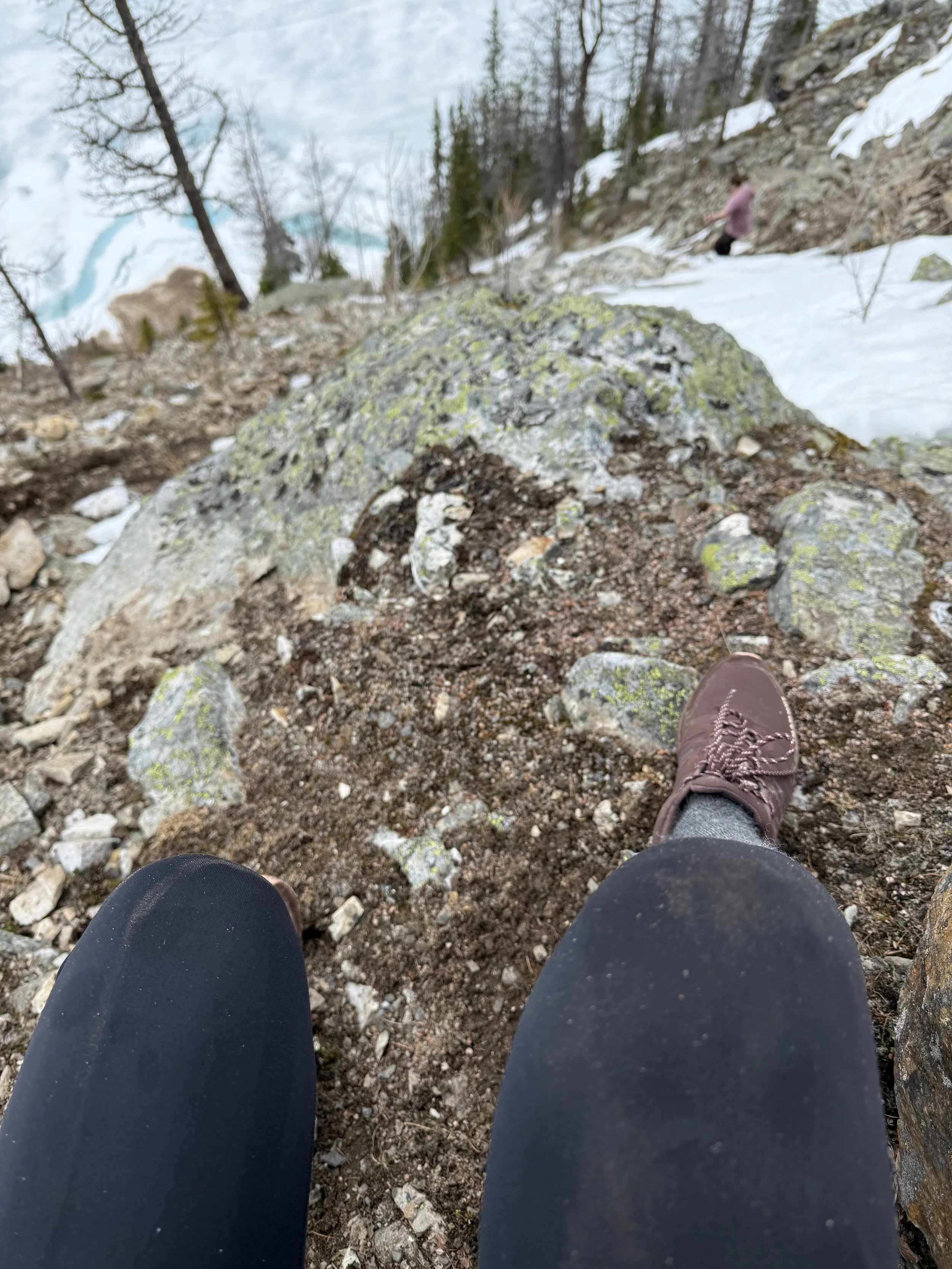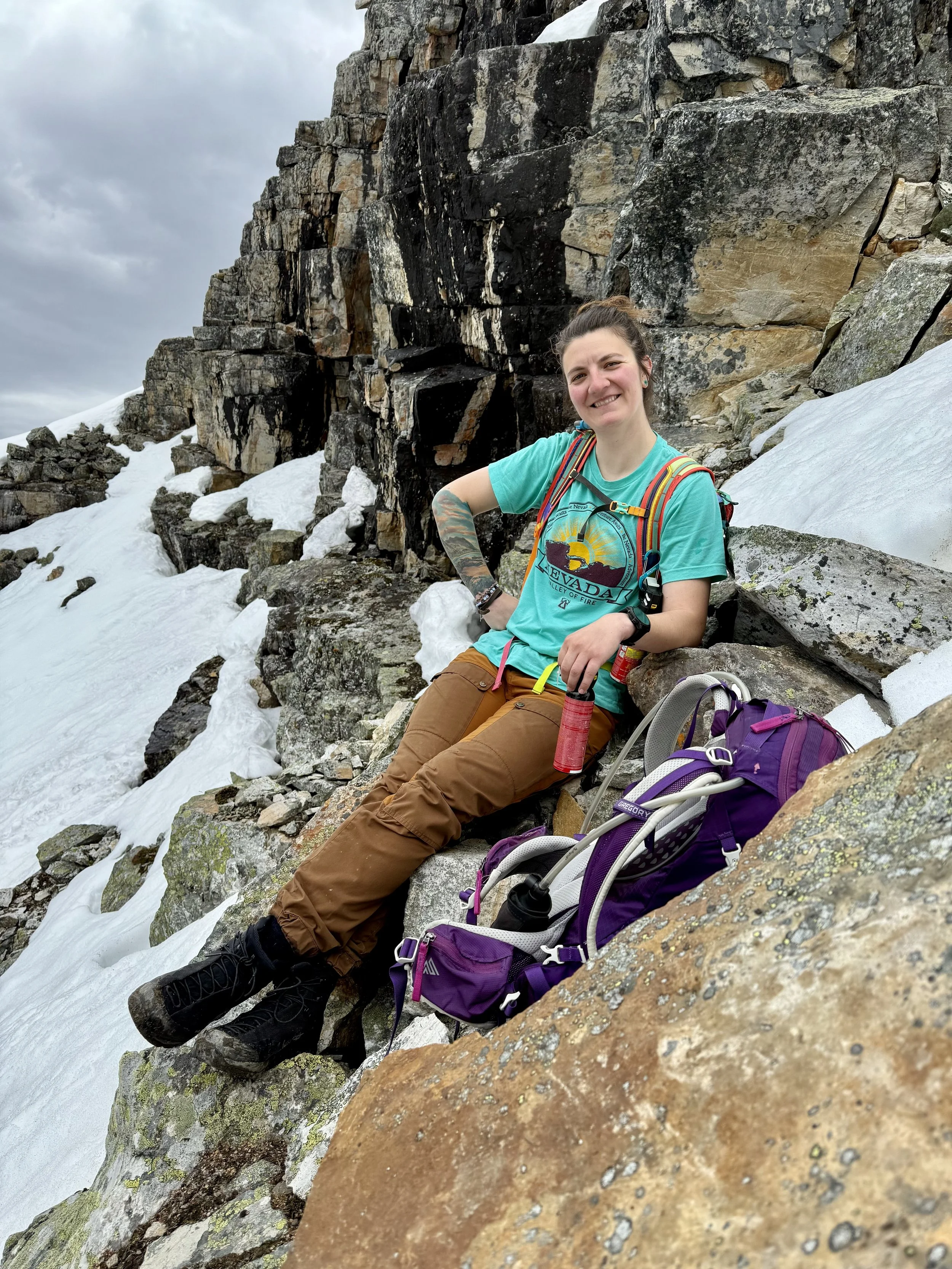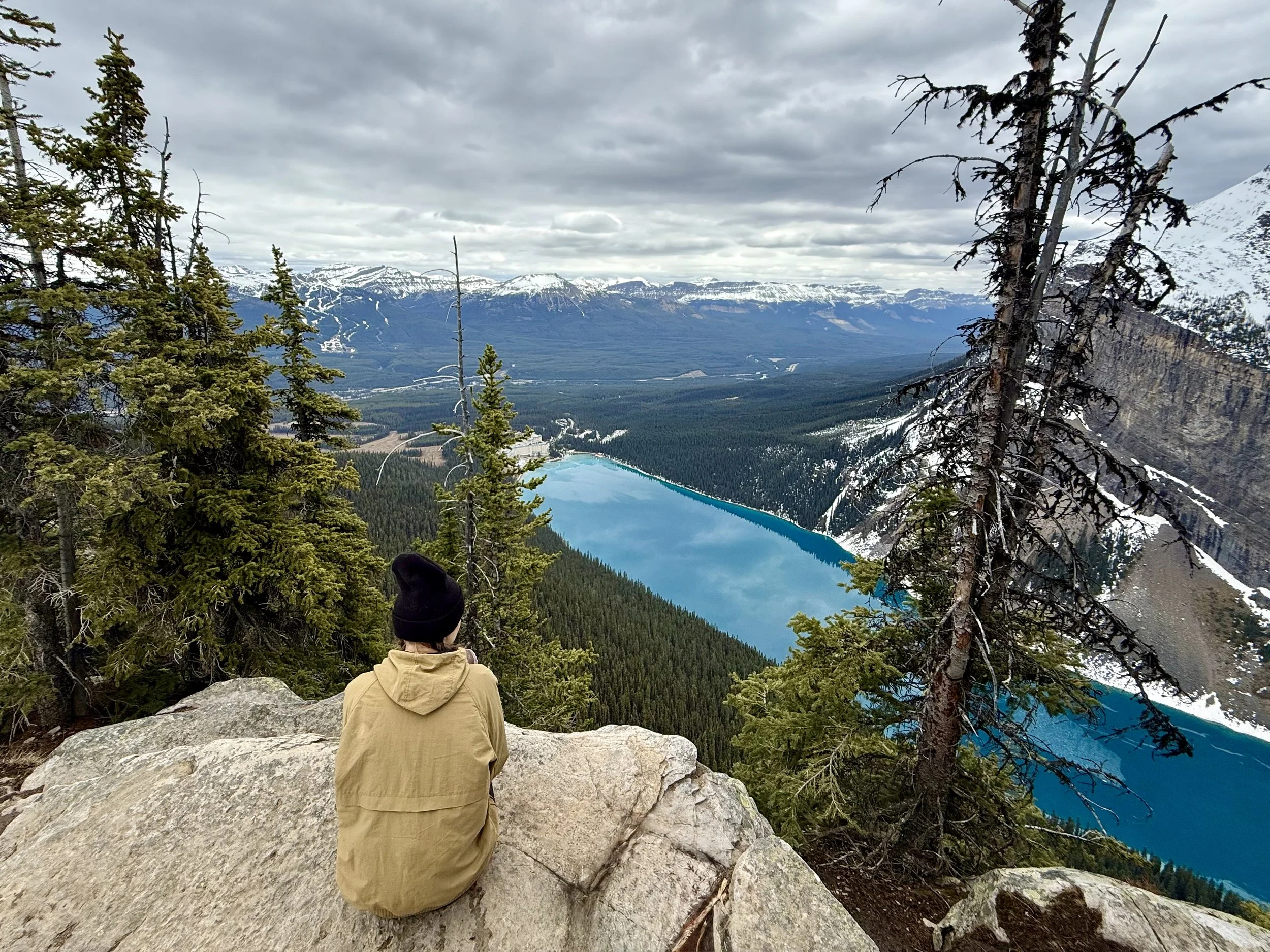Reunion in the Rockies: Hiking, Healing, and Holding On
Twelve years ago, when I was nineteen and she was twenty, I met my dear friend Mackenzie during a six month missions program based in Montana. I had come from North Dakota; she had come from her home in Alberta, Canada. Our bond deepened when we continued the journey overseas to Brazil, fueled by youthful ambition and dreams of changing the world. We connected through our dry, sarcastic humor, our cynicism, a shared love of music, and a drive to dig deeper—for meaning, authenticity, for something more.
After those six months together, we parted ways in 2013 and moved on to other pursuits—staying in touch now and then, but eventually falling into the rhythm of watching each other’s lives unfold through social media highlights. Earlier this year, though, something shifted. Mackenzie saw my posts about a trip to Toronto and started reading this blog. That’s when she reached out, offering for me to come stay with her if I ever wanted to visit. I told her if she was serious, I’d absolutely take her up on it. She lived within driving distance of Calgary and Banff—places high on my bucket list—and reconnecting with her would make the trip even more meaningful. So we made a plan: a weekend reunion in Alberta, twelve years in the making.
Alberta Arrival
The air was sweet as I sipped espresso from an ochre-colored, handmade mug in Mackenzie and her husband Jesse’s backyard. It was late May, and their crabapple tree loomed above, in full bloom—its soft white petals drifting to the ground like snow.
I had arrived in Calgary the night before, where Mackenzie and Jesse picked me up. I spotted Jesse first, waiting in the car outside the airport. I didn’t see Mackenzie.
He rolled the window down and gave a friendly smile.
“Are you…?”
“Yep, I think you’re who I’m looking for too,” I laughed. This was our first time meeting in person—aside from a brief FaceTime cameo before the trip.
“Where’s Mackenzie?” I asked.
“She went inside to find you,” he said.
“Ohhh, funny.”
We made small talk for a few minutes, and then suddenly—“Hey, friend.” I felt a quick, warm embrace from behind. It was Mackenzie. Just like that, it felt as if no time had passed at all.
We made the 45-minute drive to their home in Didsbury, with a pit stop at Five Guys for burgers.
I wasn’t sure if it would feel awkward or difficult to reconnect after so many years, but catching up came fast and easy. Mackenzie was still the same person I remembered—tall, independent, sarcastic, loyal to the bone, with a deep kind of love she doesn’t need to express in words for me to know it’s there.
Over Molson beers and a backyard fire, we dove right in—family, relationships, work. Then came American politics, music preferences, and how friendships shift through seasons of change. It was nearly midnight when we finally called it, but I could’ve stayed up longer—despite my seven-hour travel day.
“Completely present in the moment, I felt deeply grateful to be there—and ready to dive into our Alberta adventures.”
The crispy Diet Coke I’d had with my burger left me with caffeine brain before bed. I settled into their camper, which doubled as a cozy guest house, layered in thick blankets—some handmade by Jesse’s grandmother.
As I lay there, my mind buzzed, running through the plans for the next day. Mackenzie and Jesse had an early appointment in a nearby town and wouldn’t be back until afternoon. I’d have a morning to myself to explore the little town of Didsbury, before the three of us headed out for our overnight stay in Banff.
But first: coffee.
Yes—coffee, I thought, finally relaxing into sleep. I drifted off, wrapped in blankets and excitement, wondering what tomorrow might bring.
Now, sitting in their yard the next morning with my coffee, I drank in the moments of slow stillness. There was a morning chill in the air, but the sun was shining in the clear blue sky. Completely present in the moment, I felt deeply grateful to be there—and ready to dive into our Alberta adventures.
But first: coffee.
My Morning in Didsbury
After two cups of slowly-sipped coffee and hanging with my friends’ pups in their backyard, I finally got myself ready and decided to walk the few blocks to main street from their house. I couldn’t help but wonder what the people of Didsbury might think of me. No stranger to small towns, I knew that locals could spot an outsider from a mile away. With my little black travel backpack, dark wayfarer sunglasses, ripped jeans and cropped fleece sweater.
Wow, I thought.
I actually look like a travel blogger.
My first stop was Daphne’s Market for lunch—Mackenzie’s recommendation. I walked up to the counter, ordered a chicken wrap and a latte (my third coffee of the day) accidently tipping too much, forgetting that Canadian dollars come in coins. The server thanked me emphatically.
The wrap was everything—garden-fresh veggies, flavorful chicken, perfect crunch. It paired beautifully with the sweet latte. As I settled into my table, munching and sipping, comfortable in my own self-awareness, I had a quiet realization: I don’t think I’ve ever taken myself out to eat. Not like this. Airports don’t count. Neither do quick grab-and-go stops. But sitting down, choosing a spot, ordering something nice… this felt new.
And surprisingly, it felt good.
I let that sink in—how at ease I’ve become doing things on my own.
Lunch at Daphne’s
After lunch, I wandered along Main Street, popping into boutiques, bookstores, and antique shops. Towards the end of the stretch, I stepped into an eclectic vintage store called The Treasure Chest. Near the entrance, in a glass display case, I spotted a cluster of small crystal skulls in various colors. I’m not actually into crystals, but something about them intrigued me. One in particular—a reddish-brown one—caught my attention.
On a whim, I bought it. My first souvenir of the trip.
The sales associate couldn’t tell me what kind of crystal it was, so I looked it up. It was likely strawberry quartz. Apparently, it’s known for promoting love, compassion, and self-worth, and for helping to heal emotional wounds while attracting positive energy.
My friends are going to think I’m so weird, I thought, smiling to myself with quiet amusement.
By the time I wrapped up my Main Street adventures and made it back to the house, Jesse and Mackenzie were arriving home too.
We caught up on our mornings as we packed the car for our overnight trip to Banff. I told them about the crystal skull I’d bought—quickly clarifying, “I’m not into crystals or anything… I just thought it looked cool.” They responded with a knowing “sure,” and then proceeded to point out every single crystal shop we passed for the rest of the trip.
We had a three-hour drive ahead of us. The plan was simple: arrive in Banff, check into our hotel, wander around town, and grab dinner. The real adventure—our big hike in Banff National Park—would come the following day.
Strawberry Quartz
Promotes love, compassion, and self-worth, and helps heal emotional wounds while attracting positive energy.
Banff, Beer, and the Mysteries of Life
The town of Banff is stunning—nestled against the backdrop of the majestic Rocky Mountains. It reminded me a bit of Big Sky: touristy, charming, clean, lined with well-kept shops and restaurants. And, of course, surrounded by mountains in every direction.
Since we’d only arrived in the late afternoon, we had just a few hours to wander around and take it all in. Jesse insisted that we each get a classic tourist shirt, so we set out on the hunt. I ended up finding a cozy sweatshirt instead.
As we were walking, Mackenzie pointed down a particular street and said, “This is where you take your iconic Banff photo.” The view was perfect—a wide street framed by shops, leading straight to a towering mountain.
“Oh,” I said, laughing, “Well I definitely have to do that.”
Iconic reunion.
For being (basically) locals, I appreciated how they leaned into my tourist energy. They knew the photos I’d want to take, the souvenirs I’d want to buy—and they fully encouraged it. I was grateful they didn’t make me feel silly or self-conscious for wanting to soak it all in like a first-timer.
They took me to dinner at their favorite restaurant; Bear Street Tavern. Jesse and I ordered IPAs, and Mackenzie went for a fantastic-looking mocktail. We split a delicious pepperoni pizza that came with a hot honey dipping sauce—an unexpectedly perfect pairing.
As we settled in, I asked Jesse a bit about his background. He shared that he was raised Mennonite but no longer aligned with that particular faith. All three of us had grown up in religious environments, which wasn’t all that surprising—after all, Mackenzie and I first met through a missions program.
Jesse mentioned that he wished there was more space for deeper, more meaningful conversations within certain religious communities. Like— Can you really access God, and if so, how? Does church have to be in a designated building—or can it be a group of friends sitting together, asking questions about life and faith and what it all means?
“Still, I carried a curiosity for life and meaning long before I even realized it.”
With my dad being a pastor, I grew up going to church two—sometimes three—times a week. I was surrounded by biblical teachings. And while I absorbed a lot, there was always a lingering hunger in me—a curiosity that stretched beyond Sunday school answers. I remember being six or seven, asking my mom where everything came from. The beginning of time. How it all worked.
“God created everything,” she said.
“Well, who created God?” I asked.
“He was just always there.”
I walked away feeling unsatisfied with that answer. To be fair, who could really answer that question? Still, I carried a curiosity for life and meaning long before I even realized it.
Turns out, my friends did too. We found common ground in being able to discuss the hard questions—and talk openly about life’s mysteries. Even if we didn’t have the answers.
Iconic Banff Photo.
Tea, Trails & Toughing It Out
The next morning, we woke up early and quickly pulled ourselves together—layering up for the full day of hiking ahead. After packing our bags, we hit the road, stopping for coffee on the way to Banff National Park.
Before we even set foot on a trail, we were greeted by the breathtaking sight of Lake Louise. It felt like dessert before dinner. Crowds of tourists stood in awe, marveling at its otherworldly beauty—colors I’d never seen in nature before. I stood there, taking it all in. It’s the kind of view, I imagine, that never gets old. After snapping our photos, we started walking toward the trailhead.
Lake Louise
The altitude hit me immediately. As soon as we started the ascent, my lungs burned with a cold, sharp intensity. Wow, I thought. I’m either wildly out of shape… or this is the elevation. Probably both. I was out of breath, out of shape, and completely out of my element. Back in North Dakota, my “hikes” are more like riverside strolls. No elevation. No climbs.
Mackenzie and Jesse, on the other hand, were seasoned hikers—strong, capable, and at ease. I felt weak beside them, embarrassed that I needed to stop so often just to catch my breath.
“It’s okay,” Mackenzie said reassuringly. “We know you’re not used to the altitude. We can stop as much as you need.”
“No, I told myself. Be present. This is what you came for—the adventure, the effort, the beauty, AND the pain. You’re here to feel all of it. The full experience—struggle and success.”
As we continued, my body still struggling, I noticed my mind drifting: Tonight, you’ll be cozy in bed. This will all be behind you. You’ll have made it. I was trying to escape the discomfort by jumping ahead in time—an old coping mechanism I’d long since adopted. Disassociating from the moment to survive it.
But I caught myself. No, I told myself. Be present. This is what you came for—the adventure, the effort, the beauty, AND the pain. You’re here to feel all of it. The full experience—struggle and success.
And I did.
Eventually, we reached our first destination: the Lake Agnes Tea House. A small refuge perched above the serene Lake Agnes. We found a picnic table on the porch and settled in for a long, restorative break—hot tea and granola bars in hand, surrounded by everything we’d hiked for. But that was just one part of our journey. We still had Big Beehive to conquer for the ultimate views.
Pictured: Big Beehive overlooking Mirror Lake.
Also pictured: Mackenzie making fun of me for being a princess and refusing to fully splash my face with water.
Avalanche Chute & Inner Stillness
We finished up our long break and started out for Big Beehive. After some much-needed rest and hot tea, my lungs felt better, and I had the capacity to move forward with a bit more ease.
We followed the trail around the lake toward the base of our next climb. Jesse and Mackenzie pointed across the water and said, “See that? That’s an avalanche chute. The other trail is still covered in snow—this is the best route up.”
I squinted at the mountain, trying to see what they meant. Honestly, I couldn’t. But I said “sure” anyway. I trusted that they knew what they were doing.
Once we made it around the lake and stood at the foot of the mountain, it all became clear. There was no real trail—just a steep, rocky slope of mud, snow patches, and scattered debris from where an avalanche had cleared a path. I watched as a few people climbed it ahead of us. Okay, I thought. They’re doing it. It must be possible. Jesse and Mackenzie seem totally unfazed, so… let’s do this!
Pictured: Me in Awkward Mountain Goat Mode.
Also pictured: (In the distance) Jesse climbing back down after dropping his water bottle. I personally would’ve left it.
I started to climb—carefully. Grasping at rocks and branches. Digging my fingers into the earth. Testing each step before trusting it. Up and over. Up and over. I moved slowly, like some awkward version of a mountain goat. I had to use my entire body, leaning my weight into the slope to avoid tipping backward, my pack heavy on my back. I kept wondering how safe this really was.
Mackenzie stayed just ahead of me: “You’ve got this. Take my hand if you need to.”
Jesse followed behind: “If you slip, I’ll catch you. We’re not gonna let you fall.”
“Good,” I said, half-joking. “Because I really can’t die on this mountain.”
But the higher I climbed, the more I realized just how incredibly difficult this was. It felt almost impossible. If I did slip… I could get seriously hurt. Or worse. I wasn’t strong. I wasn’t experienced. But with how steep the mountain was, going back down would be even more dangerous than moving forward.
So I kept going.
“I kept waiting for that familiar, shaky internal terror to rise up—for the anxiety to kick in. I expected my body to freeze, to scream at me to quit, to turn around to survive.”
I should have been riddled with fear.
Don’t get me wrong—logically, I knew this was risky, especially considering how out of shape and inexperienced I was. But to my surprise, my nerves seemed intact. I kept waiting for that familiar, shaky internal terror to rise up—for the anxiety to kick in. I expected my body to freeze, to scream at me to quit, to turn around to survive.
I never really understood what people meant when they talked about having anxiety—at least, not until my brother Jesse died over eight years ago, when I was 23. After that, my body changed. I lived in a near-constant state of fear, soothing anxiousness with the comfort of the familiar—anything unchallenging, anything easy.
The smallest things could trigger panic: Visiting a new location or meeting new people. An unexpected phone call. Even a work email.
If someone took too long to text back, I braced myself for the worst.
My body lived on edge, convinced something terrible could happen at any moment.
So for my body to now literally be on the edge—of a mountain—and to feel calm on the inside, even while surrounded by real risk, was a measure of healing I had always hoped for, but never knew I would truly attain.
After what felt like an eternity, we finally made it past the avalanche chute and rejoined the proper trail. I flung myself onto the snowy ledge—deep, packed snow crunching beneath me—and collapsed. Somehow, I had come through relatively unscathed, aside from a few small cuts on my hands from clinging to sharp rocks, prickley branches, and icy patches. My legs were shaking with soreness, but I was alive, and I was grateful. Still, we hadn’t reached the summit. There was a ways yet to go before we stood at the top of the mountain.
What, like it’s hard?
During those next few snow-covered miles, Mackenzie’s husband, Jesse, asked me about the avalanche chute, knowing how challenging it was for me. “What were you thinking about? What kept you going? What’s the lesson for this blog?”
I smiled.
“Just keep moving,” I said. “One foot in front of the other. I kept telling myself—I have to survive. And to survive, I have to keep moving forward.”
I could’ve stayed frozen in fear, clinging to the side of the mountain for dear life. Or I could’ve turned back. But neither of those options would get me to where I want to go.
Big Beehive and Big Reflections
The view from the top really was worth it. I stood at the edge of the rock, overlooking breathtaking Lake Louise—her surreal hues of blue winding through the mountains like a dream. I can’t believe I started from way down there, I thought, gazing at the distant trail below.
On long stretches of highway, over beers and firelight, and all the way up Big Beehive, Mackenzie, Jesse, and I carried conversations across every corner of life: religion, spirituality, friendships, grief, loss, trauma, mental health, healing, careers, dreams, passions, and simple pleasures—like coffee.
Started from the bottom
But one conversation sticks in my mind. We were on the topic of loss, and I had mentioned something about losing my brother eight years ago, after he took his own life. Mackenzie’s husband asked gently, “You don’t have to answer this by any means, but… how did you get through that? How did you move through that grief?”
I appreciated the question. I could tell he genuinely wanted to know. He wasn’t asking out of politeness—he was asking because he truly cared. He didn’t want the short answer. He wanted the real answer.
In the moment, I struggled to articulate one. I didn’t have a formula, or a step-by-step method of survival.
“I don’t know,” I said. “You just do. You get through one day at a time.”
What a cliché, I thought.
Honestly… I partied. I used relationships as Band-Aids. I sought out conventional measures to patch the holes. Sure, I journaled at first. But eventually, the well dried up—exhausted by the endless sadness I poured out day after day.
Our conversation eventually drifted to other topics. But as a someone who is dissatisfied with shallow explanations, I made a quiet promise to myself to dig deeper.
Thinking about it now, I realize: I abandoned myself in order to survive that terrible loss.
I walked away from the things that once made me me—my personal growth, creative pursuits, sense of wonder and curiosity, the need for deep, meaningful connection. I lost touch with my spirituality, my hunger for adventure, the things that gave my life color. I threw it all out and stayed frozen in time. A shell of myself—slapping on badges of societal norms to prove to the world I was okay: the college degree, the relationship, the house, the steady job. Holding up the illusion that I had somehow risen above the adversity.
Meanwhile, I was shattered on the inside. But I refused to feel all the jagged little pieces.
I had already felt too much. I couldn’t bear to feel any more.
“I made it to a place where I was no longer wishing away the hours, but praying for more of them. More time to fill with purpose. With presence. With a reignited love for life.”
So I kept moving, going through the motions, doing what I thought I was supposed to do. Praying away the passing of time. That it would carry me further away from that tragic day. From that phone call. From the anger. The tears. The confusion. The paralyzing anxiety.
But in trying to move away from the pain, I moved away from myself.
Until one day, I didn’t recognize who I was anymore—or where I was going.
What I really had to do was break down. I had to feel it all in order to move through the pain. I stripped away the false comforts I had clung to and began the deep work of restoration—moving forward with raw humility. No Band-Aids. No distractions. Just a handful of good people who showed up when I needed them most, the space to heal, and a quiet determination to survive.
And not just survive—but to find myself on the other side of darkness.
I made it to a place where I was no longer wishing away the hours, but praying for more of them. More time to fill with purpose. With presence. With a reignited love for life.
Big Reflections.
Reflecting back on this trip, I see my growth so clearly—just like I stood at the top of the mountain, looking down at the trail I had just climbed. I noticed how quickly I could catch myself disassociating at the first sign of discomfort, and just as quickly call myself back to be present in the moment. To feel everything—pain and joy. I saw how my nervous system stayed calm in the face of real risk—and the way I trusted not only myself, but those around me to help me through it.
I had pushed myself further physically than ever before—not because I particularly wanted to, but because I needed to. To do what I came here to do. To reach the summit. To have the deep, meaningful conversations with wonderful people. To see the places on this earth I’ve longed to see. To connect with something greater than myself. And to continue my journey of curiosity, purpose, and seeking explanations to life’s great mysteries—even if I don’t find the answers.
Mackenzie in the Mountains
I interviewed Mackenzie in the little teahouse at the top of Big Beehive. We talked purpose, keys to survival, change, resilience, and the quiet joys in life that bring her peace. Catch the whole conversation:
